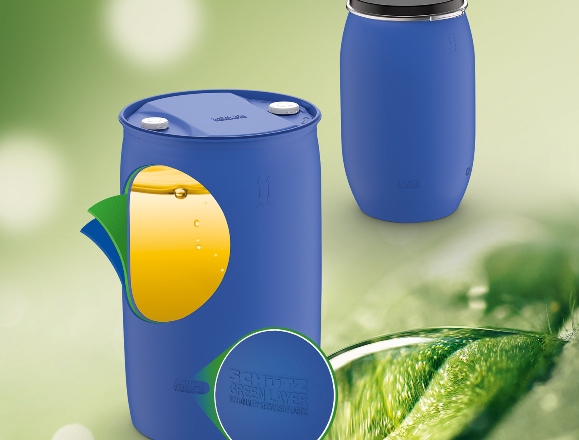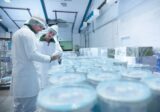As a pioneer of the circular economy in industrial packaging, Schütz has for decades been setting standards in the conservation of natural resources by saving, reusing and recycling materials and components. The company’s Plastic drums offer the highest quality, safety and performance – while at the same time providing a low operating weight. The IBCs, which are developed in-house and manufactured around the world, owe their leading global position to the highly efficient and environmentally friendly combination of reusable and disposable systems. In the new Schütz Green Layer versions, the eco-balance of both types of packaging has been taken to a new level. In the multi-layer extrusion process, the IBC inner bottles and drum bodies are produced with 40 per cent high-quality plastic recyclate. This material is generated by Schütz through its worldwide collection and reconditioning programme. Another key feature is that the IBCs of the Green Layer series also have UN approval.
Multiple use and recycling, the two factors that sit at the heart of the circular economy, have always been a core concept of Schütz IBCs. The entire life cycle of the packaging is geared towards ensuring maximum environmental friendliness. During reconditioning as part of the Schütz Ticket Service, the inner bottles of collected IBCs are removed from the steel grid and treated in a complex recycling process during which they are ground, cleaned and finally regranulated. Special degassing extruders ensure a low-odour, homogeneous quality. The company uses the HDPE recyclate obtained in a closed cycle: 100 per cent flows back into the internal production of plastic packaging components, including corner protectors and plastic pallets. This is why Schütz IBCs have always had an exceptionally high proportion of recycled material. Depending on the type of pallet, the proportion is between 36 and 55 per cent of the plastic in the entire IBC.
With the new Green Layer IBCs, Schütz has increased this proportion even further, taking resource preservation to a new level. For these containers in particular, high-quality recycled material is also used for the production of the inner bottle. The IBC container in the innovative Green Layer design contains 40 per cent recycled material alone. This corresponds to an additional CO2 saving of at least eight kilograms per IBC. The recycled HDPE is extruded only into the middle layer of the container. The inner and outer layers are made of virgin HDPE material. This way, Schütz ensures that both the filling product and the environment only come into direct contact with virgin material, making a significant contribution to protecting the quality of the filling product. Equipped with a full-plastic pallet, the total content of recycled plastic in this particular IBC model is as high as 73 per cent.
With the European Green Deal and the Action Plan for the Circular Economy, the European Union has defined the goals and framework conditions for resource-saving economic growth. The future legal requirements for the use of recyclate in packaging are already met by the new Green Layer products. In order to ensure a constant supply of IBCs and drums with recycled plastic material, Schütz emphasises how important it is for customers and returners of used industrial packaging to actively cooperate. A corresponding supply security can only be guaranteed, if there is a sufficient supply of recyclate from the Schütz Ticket Service, the global system for the reconditioning and recycling of industrial packaging by Schütz. The market launch of the Green Layer products therefore requires close coordination with customers and is initially limited to Europe, where pilot projects have been successfully launched. Future expansion into other regions is possible and intended thanks to the global production network of Schütz with state-of-the-art multilayer extrusion blow moulding equipment. For more visit schutz.com



